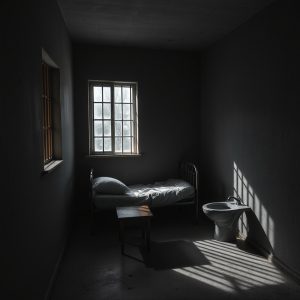By Sue-Ann Wayow
WHEN you are faced with life and death, you will do whatever it takes to live.
This may mean using a weapon whether a firearm or otherwise, all your physical force and willpower to protect yourself, your loved ones and the things you have worked hard for.
Heads of some business organisations believe that the crime situation in 2023 justifies the call by Opposition Leader Kamla Persad-Bissessar to do whatever it takes to protect.
On Thursday AZP News spoke with several business associations about Persad-Bissessar’s statements made earlier this week that have generated negative criticism from some.
The Chairman of the of the Confederation of Regional Chambers Vivek Charran said, “You should have a right to defend yourself if it comes down to a life and death situation. You will do whatever it takes to ensure that you survive.”
He said many home invasions have resulted in persons badly brutalised, sexually abused and dead.
Charran said a person close to him, endured 40 stab wounds from a blunt blade in a home invasion and several business owners have suffered at the hands of criminals.
“The situation is very real. The threat level continues to remain high. We are seeing murders continuing. Young men are executing people using semi-automatic firearms. These are not normal times. Nobody wants to die at the hands of criminals,” he said.
The law protects the criminals
President of the Couva/Pt Lisas Chamber of Commerce Mukesh Ramsingh said victims should also be able to defend themselves not just with a firearm but any item that could be used as a defence weapon when being attacked.
“Right now, the law protects the criminals, but it also needs to protect the innocent,” he said.

Ramsingh also suggested that in addition to citizens defending themselves, there were now many community watch groups who could be given greater support by the Trinidad and Tobago Police Service (TTPS) in keeping an eye out for criminals in communities.
He is also suggesting that persons acquiring legal firearms undergo psychological training to curb unnecessary use of force and that the age limit be 30 and above.
Crime does not discriminate
And President of the Downtown Owners and Merchants Association (DOMA) Greogory Aboud also said it was not unexpected that the subject of home invasions and criminal activity would be a major talking point of in the lead up to the local government election.
He added that DOMA was cautious about its comments made based on what was said on political platforms.
Aboud said, “We are in support of the lawful use of firearms and the lawful granting of firearms licenses to applicants. We do not believe that citizens should be deprived of defending themselves and we certainly support the idea that any citizen should defend themselves especially if some-one is trying to break into their home.”
He further said DOMA did not believe it was a question of “big versus small or rich versus poor or race versus race,” and crime does not discriminate.
“All of us have been under attack and therefore we suggest that lawful self defense is an appropriate reaction of the citizens,” Aboud said.
He added, “We hope that all of the commentators would make constructive remarks about solutions and will make constructive remarks about how we can follow our lawful endeavours and live a peaceful life without being attacked in our homes, in our businesses, in our cars and on the streets of our country.”
On Monday night, speaking at a United National Congress (UNC) meeting at Signature Hall, Chaguanas, Persad-Bissessar again outlined the UNC’s plans for dealing with crime including the introduction of “Stand Your Ground” laws.
While speaking of those plans, she said, “We will ensure law abiding citizens have access to legal gun ownership. When the criminals invade your home, you could draw your licensed firearm and light them up! Empty the whole clip. We have to fight fire with fire!”
![]()














Zulko zwa
August 4, 2023THE REPUBLIC OF TRINIDAD AND TOBAGO
PART 1
THE FIXED TERM SENTENCE
TO: ALL socially conscious individuals, Attorneys, HUMAN RIGHTS organizations, influencers and or activists as well as the many others who stand up against INJUSTICE in all its ugly and insidious forms, against any human being irrespective of his circumstance.
Evil in its varied forms can only continue or succeed for as long as good men do nothing or stay silent.
The brothers need your voice. Help to be their agent of change .
QUERY
Does an INMATE in our clogged Judicial system and overcrowded prisons, really “GET BACK HIS TIME ”
or
does he actually
” DO MORE TIME time”
upon conclusion of the very matter which kept him in jail under the unspeakable misery of a most dire and almost unbearable remand conditions and bearing daily witness to the limits of human suffering and endurance for several years??
The undisputed data hereunder show that Inmates in custody, WHO EITHER GO TO TRIAL OR WHO APPEAL, all end up “DOING EXTRA JAIL” i.e spending more time in custody due, solely to his CLASSIFICATION AND COURT DELAYS, both of which are OUTSIDE of the prisoner’s control.
THIS IS CLEARLY AND INESCAPABLY A HUMAN RIGHTS AND SOCIAL JUSTICE ISSUE.
1. The disparity, demonstrated by EXTRA JAIL TIME is highlighted hereunder :
Column (A) shows the fixed term imposed by the Trial Court ( The Sentence)
Column (B) shows the minimum (JAIL TIME) with full 1/3 remission, for, inter alia, good behaviour and Industry routinely available to any person sentenced to a fixed term by the Trial Court.
Column (C) is a ( randomly chosen ) period of 9 years, which an INMATE has actually spent in custody, continuously or cumulatively, while he has been awaiting either the start and completion of his trial and or Appeal process,
Column (D) shows the figure that ought sensibly and reasonably to be, the period remaining to be served, in continuing custody, at the conclusion of the matter, after being “IN CUSTODY” for that HYPOTHETICAL 9 years period i.e B minus C, irrespective of his prior classification, provided always, that this inmate completes a full two thirds of his sentence in custody.
Column (E) , shows the period remaining to be served as calculated by the Commissioner, in other words, in the Commissioner’s view, its ( A minus C ) instead of ( B minus C ).
Column (F) shows the figure arrived at after remission is granted on the figure shown at (E) and this remaining figure is in reality, the minimum period left to be served, in custody, after the Commissioner’s nonsensical, rigged and unfair calculation.
In otherwords, this much higher figure shown here at F and NOT the common sense figure shown here at D is the actual time remaining, according to the Commissioner.
Column (G) this shows the resultant extra period of EXTRA JUDICIAL JAILTIME ( F minus D ) which the prisoner is forced to serve as a hitherto and continuing systemic, secret or hidden punishment, imposed by the Commissioner, just because the prisoner exercised his right to either go to trial or appeal.
2. A. B. C. D. E. F G
15 10 9 1 6 4 3 yrs
18 12 9 3 9 6 3 yrs
19. 12.8 9 3.8m 10 6.8 3yrs
24. 16 9 7 15 10 3 yrs
27. 18 9 9 18 12 3 yrs
30. 20 9 11 21 14 3 yrs
3. What the above chart attempts to demonstrate, is that, any inmate, whether accused or Appellant, whose trial and or Appeal process, is completed after much prolonged and unreasonable delay ( of say 9 years ), if unsuccessful, the period remaining to be served, on his sentence, increases significantly ( by approx. 3yrs in several instances ) as illustrated in each of the above SIX (6) examples which are each further individually explained hereunder, reading each of the six lines of data, from left to right or from Column A to Column G as follows :-
4. For a 15 yrs sentence @ line 1 of Column A , with a full remission term of 10 years ( Column B ), imposed after a delay of 9 years ( Column C ) this inmate should have only 1 year of custody remaing with full remission ( Column D ).
However, the Commissioner calculates that this inmate, should really remain in custody for 6 more years ( Column E ) and with remission, he would do 4 years ( Column F ) instead of 1 year i.e 3 years extra jail ( Column G )
5. In point of fact, EVEN if such a 15 years sentence is imposed after a 6 year delay instead of 9 years in custody and even after a guilty plea with its consequential one third or 5 year deduction, which is routinely credited for a guilty plea, this factual matrix, according to the Commissioner DOES NOT AND CANNOT sensibly lead to only 8 months remaining to be served, although the inmate has already spent six years, of a required six (6) years and eight (8) months in custody on what in essence, amounted to a ten (10) years sentence, having regard to the plea of guilty.
6. According to the Commissioner, such an inmate has 4 more years remaining and if he displays, inter alia, good behaviour and industry, he will be let out NOT in 8 months but after he serves 2 yrs and 8 months more, which is the equivalent to a full two thirds of those 4 remaining years. Yes, this is the wicked and evil reality !!!
7. For an 18 yrs sentence ( Column A ), with its routine minimum term of 12 years ( Column B ), imposed after a delay of 9 years ( Column C ) this inmate should have only 3 years of custody remaining with full remission ( Column D ).
8. However, the Commissioner calculates that he should really remain in custody for 9 more years ( Column E ) and with remission he would do 6 years ( Column F ) instead of 9 years i.e 3 years extra jail ( Column G )
9. For a 19 years sentence ( Column A) there is a minimum term or two thirds of that sentence being 12 years and 8 months to be served in custody ( Column B) and if imposed after a delay of 9 years ( Column C ) there ought only to be 3 years and 8 months in custody to serve ( Column D ).
10. However the Commissioner says no! no! NO ! there are 10 years remaining to serve in custody (Column E ). It is only your classification that I shall change BUT I will grant full remission only during this period in your new clssification and none for the prior period under consideration and this means you have to serve a minimum period of 6 years and 8 months (Column F)
What convoluted nonsense. Is not this increased period of incarceration, a wrongful extra judicial detention?
11. For a 24 years sentence ( Column A ), with its routine minimum term to be served of 16 years ( Column B ), imposed after a prolonged and unreasonable delay of 9 years ( Column C ), this inmate should, in all fairness, have 7 years of custody remaining, provided there have been up till then, no breaches of the prison rules capable of any forfeiture of any portion of full remission ( Column D ).
12. However, the Commissioner calculates that such an individual should really remain in custody for 13 more years ( Column E ) and with remission on those 13 years, he would do 8 more. years ( Column F ) instead of 13 years i.e 5 years extra jail ( Column G )
13. For a 27 yrs sentence ( Column A ) the minimum period to be served is 18 years (Column B) after a delay of 9 years ( Column C ) the period remaining to be served ought to be 9 years ( Column D ) but the Commissioner says the period remaining is 18 years ( Column E) and with remission it could actually be 12 years Column F ) i.e 3 years extra jail.
14. For a 30 yrs sentence, imposed after a delay of 9 years and notwithstanding that the inmate has been in custody throughout, he would remain in custody for up to 14 more years instead of 11 years i.e 3 years extra
15 There evidently must be some “built in unfairness” which results, whenever an inmate does no more than exercise his right to Appeal and or his right to go to trial.
16. The Commissioner’s usual refrain when challenged, points to the fact that remission is earned by some daily point system awarded pursuant to the Prison rules to Second Division Prisoners ONLY for, inter alia, good behaviour and industry, which are not applicable to persons on remand or First Division Prisoners.
17. A not so recent and alarming example of how inequitable, discriminatory and unfair the method by which remission is calculated by the Commissioner operates in practice, to the disadvantage of several similarity circumstanced Remandees/First Division Prisoners, is best illustrated hereafter, in the 2012 conviction and sentence of Ramzan Bachan.
18. Bachan was sentenced on 16th August 2012 to a term of 29 years.
All the pretrial periods he spent in custody from his arrest on 16th May 2002, throughout his first trial in 2006, his subsequent appeal in 2007 and retrial in 2012 were TAKEN INTO CONSIDERATION and consequently becomes DEDUCTIBLE AS TIME SERVED and this cumulatively amounted to approximately 10 years.
19. Given full remission Bachan’s earliest date of release, sensibly and with a common sense calculation ought to be, after he has spent the minimum period of 19 years and 4 months from 2002.
20. This period of 19 years and 4 months BECAME DUE SINCE 16th September 2021, assuming there were no days deductable ( under the said Prison rules ) from his full remission.
21. In fact, the records at his sentence hearing shows clearly, that the Honourable Justice Prakash Moosai, as he then was, in passing sentence on 16th September 2012, even intimated in open court to the accused and after doing his own preliminary and common sense calculations, that having regard to full remission, with good behaviour, he should be released in about 9 years i.e after completing this further 9 years and 4 months period on or about the aforementioned 16th September 2021. The intention of the court could not have clearer.
22. No other method of calculation by the Commissioner, can justify or reasonably explain, why Bachan or anyone else so similarly circumstanced, having repaid his debt to society, the severity of the crime and all other factors already having been taken into consideration at the time of his sentencing and Bachan having spent all or every single day of those 19 years and 4 months in custody, should he, in any case, be thereafter, as is now his reality, be further required to spend at least about four (4) additional years in custody, amounting to some 23 years, instead of being released UPON HIS COMPLETION of 19 years and 4 months since September, 2021, and clearly he could not now be lawfully completing 4 years EXTRA JAIL just because of a deliberate misinterpretation by the Commissioner of Prisons, as to what it means to take any ” pre- sentence” period into consideration.
23. Any which way this is looked at, it is clear that this Bachan, as are the many others so similarity circumstanced and currently serving these, for all intent and purposes, extrajudicial extended terms, are thereby being unfairly punished by and through a method of calculation wrongfully and unreasonably adopted by the Commissioner which is INHERENTLY AND UNFAIRLY RIGGED, to ensure at all costs, that MORE or extra JAIL TIME is served by any inmate who chooses just to engage the legal process by either going to trial or appealing.
And it actually gets worse, the longer the delay for any hapless remandee or long stay First Division Prisoner, who unluckily and through no fault of his own, is caught between these twin traps of his classification and court delays. It would appear that the longer the prisoner is kept so trapped, as the following chart shows, that the longer the delay, for example from 9 years to 10 years, an inescapable pattern begins to emerge.
The extra judicial time increases by approximately 4 months over just one year of further delay.
In essence, the longer the inmate is kept trapped, the longer extra jail he is then further subjected to, as if this extra punishment is for him keeping himself, so long in jail, in the first place.
24. A. B. C. D. E. F G
15 10 10 0 5 3.4m 3y 4m
18 12 10 2 8 5.4 3.4 yrs
19. 12.8 10 2.8m 9 6. 3.2 yrs
24. 16 10 6 14 9.4 3.4 yrs
27. 18 10 8 17 11.4 3.4 yrs
30. 20 10 10 20 13.6 3.6 yrs
45 30 30 0 15 10 6.8
The latter of the above charts shows the said sentences when imposed after a 10 year delay. In each case there is a notable uptick or increase in, “in-custody” time for each category by an average of about 4 months extra jail more than if the said matter was determined only 1 year earlier.
The same unfair pattern of extra jail continues, as the last line of the chart just hereinabove shows. After spending 30 years ( I.e two thirds of 45 yrs ), pre-sentence as a First Division prisoner followed by a sentence of 45 years, instead of going home, ( as time served ) , according to the Commissioner’s mathematics, this prisoner has 15 years more jail to do, with a minimum period of 10 years remaining.
So the system delays for 9 years and the prisoner is punished by an average of a little more than 3 years extra jail and each year of delay thereafter this extra judicial jail increases by about 4 months.
As the system continues to delay, for example on a 45 year sentence, for as much as 30 years, which is not unlikely, the prisoner stll pays for the court’s delay during all which time he remained trapped by the Commissioner’s classification with its prospect of more jail time.
This is the absurd reality of the Commissioner’s calculation.
25. The Commissioner’ of Prisons is endowed with the authority and discretion NOT to vary any term of imprisonment imposed by a competent Court, but he undoubtedly has, an unfettered discretion, notwithstanding the stated length of the court’s fixed term sentence, to release the prisoner, through a grant of.remission of up to one third of the fixed sentence imposed or stated by the court, thereby faciitating that inmates early release after he has served a full two thirds of the sentence imposed upon him by the trial Court.
26. Each inmate reasonably and legitimately expects to be released after he has served a full two thirds of his sentence and that the Commissioner would not exercise such a discretion in relation to him, in any arbitrary or unreasonable manner.
27.. In each of the examples above however , it is only the inmate in custody who engages with the legal system, whether as an Appellant or an Accused who chooses to go to trial, that automatically loses his opportunity for obtaining full remission and always without fail, spend extra time in jail, due only to his engagement of the system and the illogical and unfair manner remission is calculated by the Commissioner.
It could never have been the intention of the Statute that one group and not the other ought to be so prejudiced and in essence, being put to his election, by having to choose between going to trial or appealing or not engaging the system in order to receive his full remission.
28. An inmate has no control over either his classification or the length of time his matter takes to be determined whether he goes to trial or appeals.
29. The Commissioner’s method of calculation and its resultant extra jail time, is essentially or solely influenced by the length of time in custody which the court through its sentence orders, must be taken into consideration. Cearly, this would have been during a period the inmate would have been classified as a Remandee or First Division Prisoner and consequently earning no points relative to remission.
So when the court in sentencing, essentially tells the Commissioner that this inmate is sentenced to, for example 15 years, taking into consideration SOME PRIOR PERIOD basically, as “time served ” is this not to be understood to mean, meaning “time served” as a Second Division Prisoner, together with all such privileges thereto attached including but so far as is practicable, not limited to the benefit of remission for the duration of that period, in the absence of any express prohibition against such entitlement as he ( The Commissioner ) , takes the period into CONSIDERATION.
30. A guaranteed unfair outcome of EXTRA JAIL for the hapless inmate, could not reasonably have escaped the Commissioner’s attention and contemplation, when he is tasked with either calculating the pre sentence time the inmate spent in his custody and then treating with that period as part of the whole sentence as time served, notwithstanding that this former period preceded the actual date of the sentence nor how the inmate was then classified.
It is to be considered as if the entire sentence pre and post period is merged into a Second Division classification.
31. In point of fact, there are hundreds of prisoners currently unfairly serving these extended extra judicial sentences and its resultant much lengthier “in custody ” time and more distant release dates than their counterparts or even co-accused, who either choose not to go to trial but plead guilty or who went to trial and was convicted but did not appeal.
32 The court cannot continue to turn a blind eye to this injustice/unfairness and continue to hide behind its assertion, that it is not responsible for the calculation of a prisoner’s remission, while the Commissioner, whose function it is, on the other hand to do so, cannot continue to assert, that its traditional that he calculates remission only on the actual calendar years left to be served as at the date of the final determination of the matter, notwithstanding his knowledge, that such an interpretation, has the effect of automatically excluding the grant of ANY REMISSION AT ALL from his consideration while that inmate was on remand, and his further knowledge that neither the grant nor forfeiture of remission has been or is ever expressly or at all, excluded from the court’s order, wherein, he ( the Commissioner ), is required to CONSIDER the entirety or any portion of any prior period as ” time served “.
33.Considering or in consideration of any time in custody as time served, must be, irrespective of the classification during that period and ought to be for “aĺl purposes” including the benefit of remission, in the absence of any express prohibition in respect thereto.
34 Both the Judiciary and the Prisons are Institutions of the same State, whose single representative is the Attorney General. It is their combined actions which causes both the unsuccessful Appellant or convicted accused, who would have done no more than exercise his right to Appeal or to go to trial, to be always significantly disadvantaged, as if any such individual dares to exercise his right, he SHALL be secretly and unfairly penalized, for exercising no more than his entitlement, which the legislature never intented to be so unreasonably or at all fettered.
35. A considering of any remand period as “time served” in a fixed term sentence, must as a matter of common sense, include the issue of remission, as a “de facto” Second Division Prisoner, not only for good behaviour and industry, but also for, among other things, to mitigate the long since recognized harsher conditions to which the individual existed and has been subjected to, for the extended period in question, through no fault of his own.
36. These two arms of the State, ought not to be able to combine in the manner they currently do, with the result being that each arm is able to wash its hands like Pontious Pilate, with each arm saying it is not responsible for a recognized injustice meted out to any remanded, particularly a “long stay” inmate, who has done nothing more than exercise either his right to go to trial and or Appeal and who has for 9 years or more in several instances and in the case of Bachan, who has been through 10 years of court processes, endured the aforesaid harsher conditions.
37. Whenever any prior remand “in- custody” period is to be taken ” INTO CONSIDERATION “, as part of any fixed term sentence, there is nothing in that phrase or those words which can expressly or at all be reasonably capable of constraining or prohibiting the Commissioner from granting an equivalent number of points towards remission or stage to the intent that such an inmate would have been qualified thereby for remission on that pre sentence period, irrespective of how he was then classified. This cannot be a too difficult exercise, particularly, now that bio socials for persons on remand are increasingly used to assess, inter alia, a remandee’s behaviour over varying time periods. Any such bio social which shows no adverse findings against the inmate during the period under consideration but quite positive reviews, should merit the requsite remission or stage points threshold for the grant of full remission.
38. Irrespective of the Commissioner’s method of calculation, at the conclusion of an Appellant’s Appeal or an accused’s trial process, the inmate ought not to be kept in custody after he has completed, continuously or cumulatively, a full two thirds of the fixed sentence, that is to say:-
NOT BEYOND a period of 10 years maximum, in respect of a 15 year sentence
or 12 years in respect of an 18 year sentence
or
12 years and 4 months in respect of a 19 years sentence
or
16 years in respect of a 24 year sentence
or
18 Years in respect to a 27 year sentence
or
19 years and 4 months in respect of 29 year sentence ( as in Bachan’s case)
or
20 years in respect of a 30 years sentence
save for any additional time forfeited for any breach/s of any Prison rules.
39. Just imagine for a moment, a not so unlikely factual matrix, of an accused already in custody for some 16 years and is then found guilty at his trial and sentenced to 36 years and this is followed by an Appeal.
40. In this clogged system it would not be unusual for that appeal to be determined after a further 4 years of waiting and if ultimately dismissed and his sentence is affirmed TAKING INTO CONSIDERATION his full “IN CUSTODY custody” period.
41. With full remission, such a 36 year sentence attracts 24 years IN CUSTODY before early release. Fairness and common sense require that such an inmate having spent a continuous period of 20 years in custody would become eligible for early release in 4 years I.e after completing a full two thirds of his sentence.
42. NOT SO FAST says the Commissioner and his contingent of magic mathematicians. This inmate will in fact be released by the Commissioner, in 6 years and 8 months instead.
Clearly this actually amounts in reality to almost 3 years EXTRA JAIL.
43. Oh ! And I forgot, the Commissioner suggests that the “genius” in his mysterious mathematical formula is that, it enables him ” to give back to the inmate all of his time” he has spent in custody.
Really ??? So how come after the Commissioner’s mathematics gives the inmate back “all his time he spent in custody”, that same inmate ends up making all this extra jail ???
Clearly this Commissioner’s mathematics not mathsing !!!
44. Apart from the above unfair method of calculation of time remaining to be served, there is even another method used by the Commissioner also guaranteed to result in extra time in custody and again, it is best illustrated in the case of BACHAN and his 29 year fixed term sentence handed down in 2012 after he spent 10 continuous years in custody with about 9 more years to complete 19 years and 4 months in custody according to his sentencing Judge.
Under this method, the Commissioner’s reasoning goes as follows.
45. A 29 year sentence handed down in 2012 means that adding 29 to 2012 gives a release date of 2041. However by minusing the 10 years he spent in custody, that is to say, 2041 minus 10 makes his release date 2031 instead of 2041.
46.. Between 2012 and 2031 is 19 years and remission on a 19 year sentence gives a release date in 12 years and 4 months. (Now tell me if this is not almost like fudging.)
47. . So by either method of calculation which are both illogical and unfair, Bachan has not been released in 9 years and 4 months but is set to be released a little over 12 years in each case i.e more than 3 extra years in jail either way.
48. All that Bachan and the many others like him would have done, is to participate in the trial process which, through no fault of his own lasted 10 years, after which he has to then serve more than 3 extra years in custody, the sole reason being the way the Commissioner classified him i.e his Classification and the length of time his matter took to be determined, both of which are beyond the prisoner’s control.
49. Take the most recent example of the excruciatingly slow pace of the trial process, which eventually led to the release of six men from prison, after spending some 14 years in custody.
50. Just imagine for a moment that these 6 men were not facing capital murder wirh a penalty of death but either murder felony or manslaughter, both of which would have attracted fixed term sentences and ( god forbid ), had been found guilty instead of not guilty of capital murder and sentenced to say, a fixed term of 36 years.
51. Bearing in mind that a 36 year sentence would routinely result in 24 years in custody with full remission aforesaid, these men would sensibly have been expected to serve 10 more years in custody, to complete the 24 years or the equivalent of two thirds of their sentences.
52. However, the Commissioner’s mathematicians would scream, hold a minute, these men would have 22 years remaining NOT 10 years and with remission on those 22 years, they would actually have to serve a further 14 years plus 8 months in custody instead of 10 years.
How could such cruelty be allowed to pass as justice.
Clearly this is more jail and all these men would have done was to participate in the trial process. What justification can there be to further punish them with more jail time ??
53. Finally consider a delay of 30 years culminating with a sentence 45 years.
Upon such a sentence with its consequential 30 years minimum period, such a prisoner ought to be immediately released, just as in the earlier example in the second chart, of a 15 year sentence imposed after 10 years in custody and instead of being released as time served, is required by the Commissioner, to serve some 3 years more.
54.. With the Commissioner’s understanding of things, this person facing him after a 30 year delay on this 45 years sentence, still has 15 years to serve but with remission on that 15 he would only serve 10 more years.
So from a legitimate expectation of doing zero more years after 10 years on a 15 years sentence or after 30 years as a First Division Prisoner sentenced to 45 years to actually unfairly doing 3 and 10 more years respectively, and count yourself as extremely lucky, because the Commissioner “gave you back” all your time.
Did I miss something???
55. Quite clearly, the intention of the Commissioner was and continues to be, to make the prisoner, whose balance of sentence to serve he is required to calculate, an example, by deliberately misunderstanding the meaning of the Court’s order and adopting a method of calculation guaranteed to extending the duration of the prisoner’s punishment, beyond the period intended or allowable by the particular fixed term sentence AND THE COMMISSIONER seeks THEREBY to routinely, impose this further punishment of extra jail time, as a deterrent, not just for the particular prisoner in question, but for any others who may wish to or entertained any intention of opting to go to trial or to Appeal.
56.. After all, the Commissioner’s function in this regard really is to calculate the minimum time i.e two thirds of the fixed sentence or balance of time a prisoner in his care, hitherto, as a First Division Prisoner, now treated as a de facto Second Division Prisoner, should remain thereafter imprisoned, in his continued care, albeit, as a de jure Second Division Prisoner.
57. The court goes on to give him clear guidance on the matter by, in essence instructing that the period spent in the Former Division ( time in custody) is to be CONSIDERED as “time served”.
This can only mean time served in the Second Division with corresponding privileges and or benefits, which includes the grant of remission.
58. It must be borne in mind that, at the time these rules hereunder were formulated in the last century, the demographics of the prison population were markedly different from the current reality.
Not only are the remanded numbers now significantly higher but the ratio of remandees to convicted has been reversed and their average length of stay are now routinely extending in many cases to well in excess of an average of 10 years.
EXTRACTION FROM PRISON RULES
318 – Commencement These Rules shall take effect from the date of their publication in the *Royal Gazette, 26th August, 1943* *First Division Prisoners* 297 – First Division Prisoners Persons committed to prison in any of the following circumstances shall be classed as first Division Prisoners: (a) For default in the payment of a civil debt, tax or rate, or for contempt of Court, or for want of security for their appearance at Court. (b) To await deportation or extradition. *(c) To await trial at the Assizes, or during the investigation of charges by any court.* *(d) To await the hearing of an appeal against sentence or conviction.
* 298 – First Division Prisoners “ Privileges (1) First Division prisoners shall be detained in that part of the prison specially provided for them, and be kept apart from other prisoners as far as this is practicable. (2) They shall not be compelled to have their hair cut or to shave except when the Medical Officer deems it necessary on the grounds of health or cleanliness, and their hair shall not be cut closer than may be necessary for such purposes. (3) They may be permitted to wear their own clothing and have necessary changes supplied from time to time, provided that such clothing – a. be sufficient and suitable b. be not required for the purposes of justice; c. be disinfected if the Medical Officer so requires. (4) If they do not wear their own clothing they shall wear a prison dress of white. (5) They may be allowed to order food for themselves at their own expense and to have such food sent in at the hours fixed be the Commissioner and subject to strict examination. This privilege may, at any time, be withdrawn by the Commissioner on proof of any abuse thereof. (6) They shall be allowed prison diet as prescribed by Schedule IV hereto (except when they have food sent in). (7) They shall be permitted to be visited twice a week between the hours of 10 a.m. and 2.p.m. by not more than three relatives or friends or legal advisers, at the same time for a period of 15 minutes. The Commissioner may in any special case or for special reasons prolong the period of the visit or increase the number of visits or allow them to be visited by more than three persons at the same time. Such interviews to be in the presence and hearing of a prison officer, except in the case of legal advisers when the interview shall be in the sight, but not in the hearing of such officer. (8) They shall, if necessary for the purpose of their defence, be allowed to see on any week day at any reasonable hour, a registered medical practitioner chosen by themselves or their friends or legal advisers in the sight but not in the hearing of a prison officer. (9) They shall be allowed to write two letters a week to their relatives, friends or legal advisers. Any confidential written communication prepared as instructions for their legal advisers may be delivered personally to him or his authorised clerk without being examined by the Commissioner unless the Commissioner has reason to believe that it contains matter not relating to such instructions. All other communications shall be subject to inspection by the Commissioner and may be refused if objectionable. (10) They may, with the Commissioner’s permission, receive at their own expense, toilet requisites, books, newspapers or other articles as are not, in the opinion of the Commissioner, or an objectionable kind or likely to be detrimental to prison discipline. (11) They may, with the Commissioner’s permission, receive any books, papers or documents required for the preparing of their defence.
299 – Forfeiture of Privileges Such of the special privileges as are allowed by these Rules to the First Division prisoners may be forfeited for any abuse thereof, except in the case of visits and letters required for the purposes of securing bail or preparing a defence.
300 – Exercise of First Division Prisoners First Division prisoners shall be allowed such exercise as may be laid down for them from time to time by the Commissioner.
*301 – Time served before entering appeal* The time served by a convicted prisoner, before entering an appeal against conviction or sentence, shall be taken into account in computing the length of his sentence should such sentence be confirmed by the Appellate Court. 302 – Helpers First Division prisoners shall not be required to work, but may, if they so desire and if the Commissioner approves, be employed within a prison.
*303 – Application of General Rules to First Division Prisoners* First Division prisoners shall be subject to the rules set out in Part IV hereof, except in so far as the same are inconsistent with the special rules applying to them.
304 – Discharge First Division prisoners shall be discharged from the Royal Gaol, and not from the Police Headquarters as required by rule 237 hereof.
*SECOND DIVISION PRISONERS*
305 – Definition (1) Prisoners committed to prison in any of the following circumstances shall be classified as Second Division prisoners:-
(a) To serve a sentence without hard labour.
(b) Failure to find sureties for the keeping of the peace.
(c) Sentenced by a Naval, Military or Air Force Court.
(2) They shall be located in that part of a prison specially provided for this Class of prisoner and be kept apart from other prisoners as far as this is practicable.
(3) They shall not be required to work, but may, on application in writing, be employed within a prison. In such cases, they shall be subject to the rules set out in Part IV hereof.
306 –
, EXTRACTION FROM PRISON RULES
These Rules shall take effect from 26th August, 1943.
CLASSIFICATION 283 – Classification
(1)
With a view to facilitating the training of convicted prisoners and to minimising the danger of contamination, the Commissioner shall classify them in accordance with the following provisions:-
(a) Star Class – Those who are in prison for the first time or those whose previous sentences were for trivial offences and whose character is otherwise good.
(b) Special Class – Those who have served not more than three sentences for offences not considered grave, or who are not habitually criminal or of corrupt habits.
(c) Ordinary Class – Those not placed in (a) or (b).
(2) Each Class shall be separated as far as this is practicable.
(3) The Commissioner may, in his discretion, exclude or remove from (a) or (b) any prisoner whose character or conduct unfits him to associate with other prisoners of that class.
HONOUR PRISONERS 284 – Honour Prisoners “ Employment
(1) Prisoners personally selected by the Commissioner or the Deputy Commissioner or a Prisons Superintendent may be employed within the walls of a prison without the constant supervision of an officer.
(2) Special care shall be exercised in the selection of prisoners for such employment, particularly in the case of a prisoner in the earlier part of his sentence or with a considerable criminal record.
(3) Each prisoner so selected will give his word of honour in writing to the Commissioner, Deputy Commissioner or Prisons Superintendent to obey all rules and orders, to put his best efforts into his work and to conduct himself properly in every way in return for being trusted. While employed as an Honour Prisoner, he shall wear a red band around his right arm.
(4) This privilege may be forfeited for breach of trust or misconduct.
REMISSION OF SENTENCE 285 – Remission With a view to encouraging good conduct and industry and to facilitating the reformative treatment of prisoners, arrangements shall be made by which a convicted prisoner serving imprisonment, whether under one sentence or consecutive sentences or under any such sentence or sentences and the remnant of a previous sentence, for a period exceeding one month, may become eligible for discharge when a portion of his term of imprisonment, not exceeding one-third of the whole term of imprisonment, has yet to run: Provided that nothing in the said arrangements shall authorise the reduction of any period of imprisonment to be served to less than thirty days.
285A – Remission (1991 Amendment) Notwithstanding rule 285, where a prisoner is sentenced to a term of imprisonment, whether under one sentence or consecutive sentences the aggregate of which does not exceed twelve months, he may become eligible for discharge when a portion of his term of imprisonment, not exceeding one-half of the whole term of imprisonment, has yet to run, save that nothing in this rule shall authorize the reduction of any period of imprisonment to be served to less than thirty days.
PROGRESSIVE STAGES 286 –
Stages (1) There shall be established a system of progressive stages with increasing privileges attached to the higher stages for sentences mentioned in rule 285(b)*. [see Prison (Amendment) Rules, 1948)
(2) There shall be four stages “ First, Second, Third and Special, Promotion from stage to stage will in all ordinary cases follow the earning of the prescribed number of stage marks. Privileges may be forfeited or postponed in accordance with rules 270 and 272.
First Stage: A prisoner shall remain in this stage until he has earned 1,647 [6mths 2yrs 4yrs] and be eligible for all the privileges of the Third Stage.
287 – Special Remission A prisoner in the Special Stage at the time of his discharge may be gra